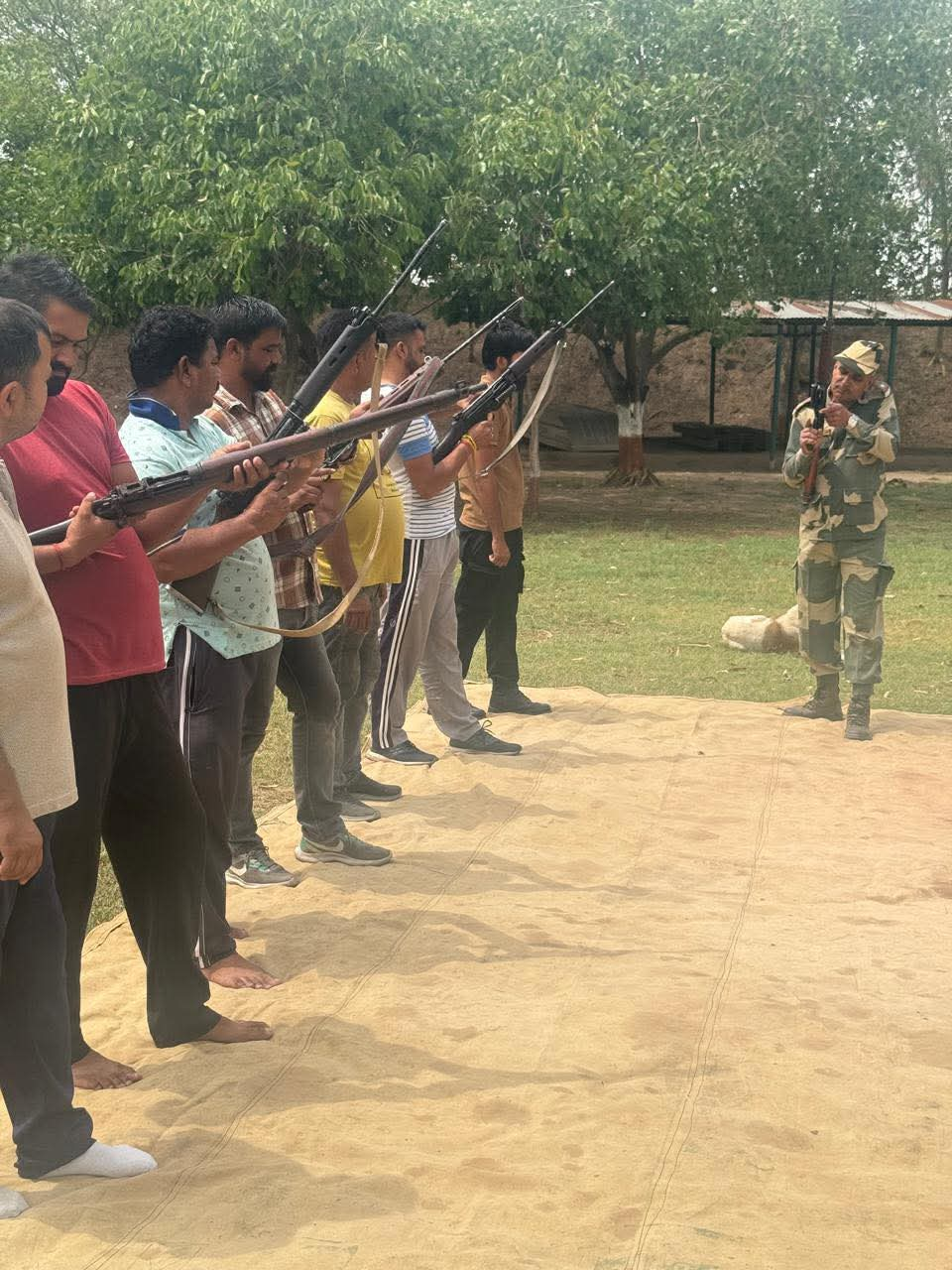 Early Times Report Early Times Report
Jammu, May 31: In response to Pakistan’s attempts to infiltrate terrorists across the International Border, the Border Security Force (BSF) has launched a training program for Village Defence Guards (VDGs) in Jammu province’s border areas, including Samba district. The three-day camps focus on weapon handling, tactical response, and situational awareness to prepare VDGs to counter terrorist threats. VDGs, civilian militias formed in the 1990s, are critical as a “second line of defense,” leveraging local knowledge to detect and deter infiltrations, especially in remote areas of Poonch, Rajouri, Samba, Kathua, and Jammu.
Equipped with modern rifles and led by Special Police Officers, VDGs enhance security by relaying intelligence and holding ground until security forces arrive.
The initiative, revived in 2022, addresses recent escalations, including Operation Sindoor, and aims to empower communities while ensuring accountability to prevent past misuse. VDGs are vital for securing hinterlands, countering drone threats, and supporting events like the Amarnath Yatra, reinforcing India’s border security strategy.
Village Defence Guards, formerly known as Village Defence Committees (VDCs), are established in the mid-1990s to protect vulnerable communities in Jammu and Kashmir, particularly in remote hilly areas, against terrorism.
Comprising local volunteers, including ex-servicemen and able-bodied youth, VDGs are trained and armed with weapons like Self-Loading Rifles (SLRs) to defend their villages until security forces arrive. Their role is critical in Jammu’s border districts—Poonch, Rajouri, Samba, Kathua, and Jammu—where the challenging terrain and proximity to the IB and Line of Control (LoC) make them prime targets for infiltration.
VDGs serve as “force multipliers” for security forces, acting as the eyes and ears on the ground. Their intimate knowledge of local topography allows them to detect suspicious activities, such as drone movements or infiltration attempts, and relay crucial intelligence to the BSF and Indian Army. During the peak of militancy in the 1990s, VDGs played a significant role in thwarting attacks, capturing militants, and preventing massacres in remote areas with limited security presence. For instance, their vigilance helped avert several militant attacks in the Chenab Valley and Pir Panjal regions.
The revival of VDGs in 2022, approved by the Union Ministry of Home Affairs, was prompted by a resurgence of terrorist activities in Jammu, with over 22 civilians killed in targeted attacks in the past three years. Each VDG unit, typically consisting of 10-15 members, is led by a Special Police Officer (SPO) or ex-serviceman and operates under the district’s Senior Superintendent of Police (SSP). Members are now equipped with modern SLRs, replacing outdated .303 rifles, and receive monthly remuneration—Rs 4,500 for leaders and Rs 4,000 for volunteers—to encourage participation. |
